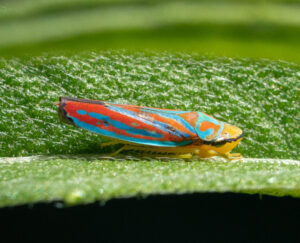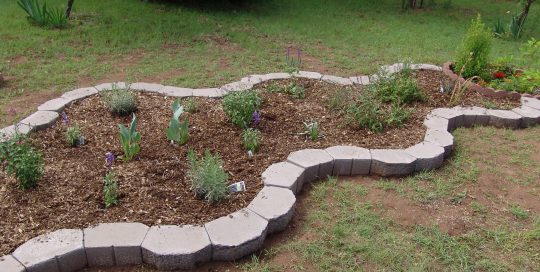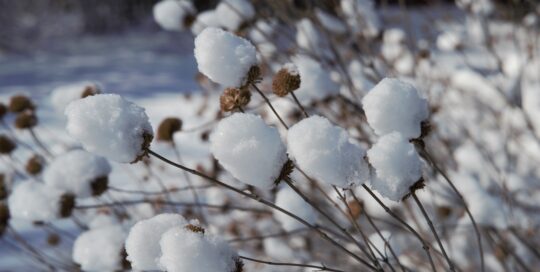Leafhoppers are a diverse group of small insects in Cicadellidae family. They derive their name from their ability to hop around the leaves in your garden, the better to feast upon them. Considered to be a pest by most people, some can be quite beautiful, and they certainly play a role in the wildlife garden, much like grasshoppers. So here is a little bit about leafhoppers in the wildlife garden, good and bad.
About Leafhoppers
Leafhoppers vary widely in color and size, but they don’t get much over a centimeter in length so I would describe them as “tiny to very small.” Often you’ll notice the damage they do (white circles or dots on leaves) before you notice the insects themselves. With over 20,000 species identified globally, they are likely to be found in gardens everywhere, feeding on a wide variety of plants, including vegetables, flowers, shrubs, and trees. Some are specialists, feeding on specific plants; others are generalists, feeding on whatever is available.
Impact on Plants
Leafhoppers feed on plant sap. They pierce the plant’s leaves with their mouthparts to suck out the sap. These puncture wounds result in the white circles on the plant’s leaves. Luckily, most plants tolerate this damage well, so the result is typically just cosmetic. However, in rare cases, if the damage is severe, it may cause the leaves to curl and turn brown, weakening plants, and making them more susceptible to other pests or diseases. Usually, your plants will just continue doing their thing, feeding your pollinators, producing seeds for your birds, and so forth.
Unfortunately, a few leaphopper species can transmit serious diseases. These diseases can negatively affect food crops and some ornamentals. Diseases include:
I don’t want to downplay the seriousness of some of these diseases, so it’s worth keeping an eye out for leafhopper damage in your gardens, particularly if you’re growing vegetables or crops. Just remember that it isn’t always a cause for panic.
Leafhopper Management
The best way to control leafhoppers is similar to controlling grasshoppers: natural predators. Beneficial insects like ladybugs, lacewings, and spiders prey on leafhoppers and can help keep their numbers in check. Insect-eating birds will also feed on them. If you’re a wildlife gardener, you’ve probably already created the habitat necessary to encourage these predators.
Two other strategies may also be used if your leafhopper populations are out of control, or you have a disease-carrying species that needs to be kept in check or eliminated:
- Physical barriers: Row covers can prevent leafhoppers from landing on plants.
- Organic insecticides: Organic insecticides such as neem oil or insecticidal soap can be applied to affected plants.
Benefits
Leafhoppers are an important food source for a wide variety of predators, including birds, spiders, predatory insects (such as ladybugs and lacewings), and amphibians. As a food source, leafhoppers help support diverse populations of predators, contributing to the overall health of the ecosystem.








